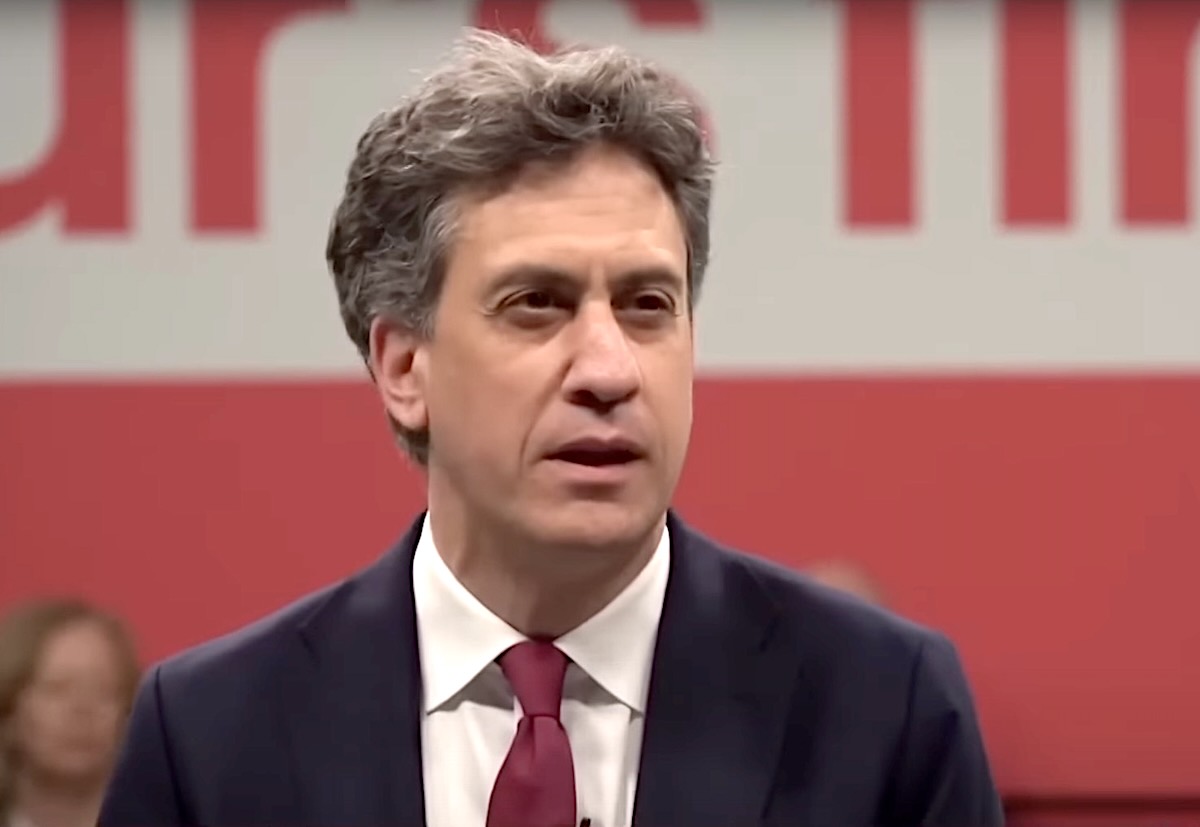When it comes to the real cost of renewables, the cat is well and truly out of the bag.
Ed Miliband can carp on all he likes about how his precious net-zero revolution is going to magically lead us down the merry path to cheaper energy bills, but he can’t change facts – and his green dreams continue to collide with reality in the most damning fashion. [emphasis, links added]
The latest blow to his clean energy fantasy comes once again in the form of wildly unaffordable offshore wind power after Miliband unveiled the prices the Government is willing to pay for yet more offshore wind farms to be built in UK waters.
When Claire Coutinho, the shadow energy secretary, describes them as “eye-watering”, she isn’t exaggerating.
International developers are being wooed with a maximum guaranteed price of up to £113 per megawatt hour (MWh) for the power they generate from the farms, far above the wholesale price of power, which last year averaged about £72.
The price has been confirmed ahead of the latest round of subsidy awards for developers.

You might think Miliband had learnt from past debacles, such as 2023’s auction, which was such a catastrophic failure that there wasn’t a single bid despite seven contracts to build new farms being put forward.
True, it was late 2023 when Labour was in opposition, but still. That was such a shambles, it was obvious that the economics of offshore wind were evaporating faster than it takes a giant spinning metal blade to turn a passing gull into mincemeat and feathers.
The guaranteed prices on offer were so low that Tom Glover, chairman of energy company RWE’s UK arm, warned that no more offshore wind farms would be built unless the Government increased the guaranteed long-term prices by as much as 70pc.
By Glover’s calculations, that would have meant promising developers between £65 and £75 per MWh for the power generated from wind farms, as opposed to the £44 that was actually on the table.
And yet look where we are today, less than two years later. The strike price for offshore wind in the subsequent round actually turned out to be even higher than Glover’s demands, at £82.
Now Miliband is willing to pay up to £113 in the upcoming round, a 38pc leap from that and a whopping 57pc more than the wholesale price of electricity last year.
He has clearly allowed the disastrous cancellation of several major wind projects to spook him into being even more generous this time around.
Today @Ed_Miliband has announced the prices he is willing to pay new renewables in the upcoming AR7 round of the CfD scheme
Look how expensive they are!!!
The average wholesale power price in 2024 was just £73 /MWh
But he is willing to pay up to 57% more for offshore wind.… pic.twitter.com/yI0Dkaoe97
— Kathryn Porter (@KathrynPorter26) July 23, 2025
The biggest of these was the vast Hornsea 4 wind farm, which was abandoned earlier this year.
The reason? Because it would never be profitable, Danish developer Ørsted said a mere nine months after it was awarded the contract. It was even willing to fork out €500m (£423m) in “break-away” costs to relinquish itself from the burden.
This was the moment when Miliband’s grand vision for Britain to roughly quadruple its wind capacity to between 43 and 50 gigawatts by the end of the decade came crashing down.
Hornsea 4 wasn’t just one of Britain’s largest clean energy projects; it was the most significant wind farm being built in British waters, slated to provide enough electricity to power 2.6 million homes.
The £85 per MWh subsidy on offer from the Government was too low, Ørsted said, and if the world’s preeminent offshore wind specialist can’t make the numbers stack up, then what chance do others have?
After all, it wasn’t the only project to bite the dust.
Top image via @TheRepublicOfMikeGraham/YouTube screencap
Read rest at The Telegraph




